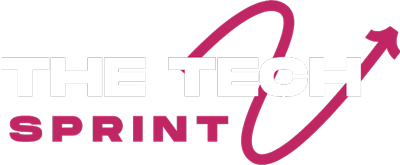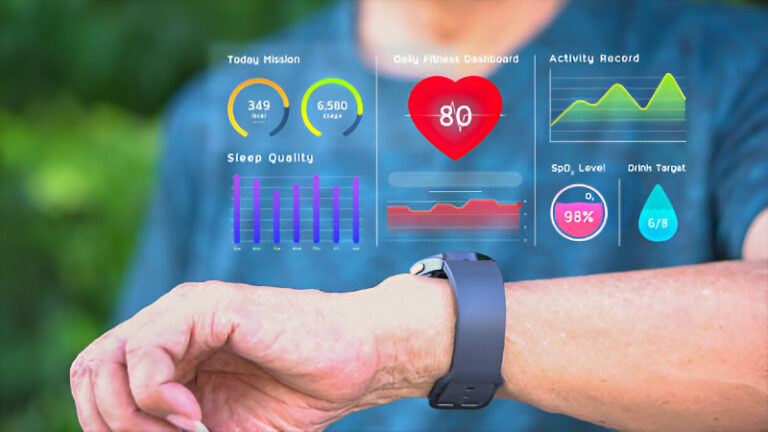The landscape of personal health management is undergoing a dramatic transformation, driven by the rapid evolution of advanced wearable health tech. No longer just glorified step counters, today’s sophisticated wearables are seamlessly integrating into our lives, offering unprecedented insights into our well-being and empowering us to take a proactive stance on our health. This revolution is particularly timely, addressing the growing need for continuous health management, especially for individuals with chronic conditions or those seeking to optimize their preventive care.
Within the first 100 words, advanced wearable health tech is redefining how we monitor and manage our health, moving from reactive treatments to proactive wellness. These innovative devices, ranging from smartwatches to discreet skin patches, continuously track vital metrics, providing real-time data that empowers users and healthcare providers alike. Fuelled by breakthroughs in sensor technology, AI, and IoT, this sector promises to bridge the gap between intermittent clinical visits and ongoing health supervision, offering a more comprehensive and personalized approach to healthcare for everyone.
Beyond the Wrist: Factors in Advanced Wearable Health Tech
While smartwatches and fitness trackers have popularized the concept of wearables, the frontier of advanced wearable health tech is rapidly expanding into diverse and often less intrusive form factors. This diversification is crucial for enhanced comfort, continuous monitoring, and the collection of more specific biometric data.Consider the emergence of:
- Smart Rings: Discreet and stylish, smart rings pack powerful sensors to track sleep patterns, heart rate, body temperature, and activity levels. Their unobtrusive design makes them ideal for 24/7 wear, minimizing user self-consciousness or discomfort often associated with bulkier devices.
- Epidermal Skin Patches: Ultra-thin and disposable, these e-skin patches adhere directly to the skin, sensitive enough to record subtle electrical signals like heartbeats and muscle movements. They represent a significant leap for continuous, non-invasive monitoring of chronic illnesses such as heart failure and diabetes, transmitting data wirelessly to healthcare providers.
- Smart Clothing & Textiles: Integrating sensors directly into fabrics, intelligent fashion can monitor everything from muscle contraction during exercise to vital signs during daily activities. This offers a comfortable and natural way to collect health data without requiring users to remember to put on a separate device.
- AI Hearing Aids (Hearables): Evolving beyond simple amplification, these devices can filter out unwanted noise, adapt to environments, and even incorporate fitness tracking, audio streaming, and translation capabilities, blending assistive technology with comprehensive health monitoring.
The Algorithmic Advantage: AI and Predictive Wellness
The true power of advanced wearable health tech lies not just in its ability to collect vast amounts of physiological data, but in its sophisticated analysis. This is where Artificial Intelligence (AI) plays a transformative role, shifting the paradigm from data collection to predictive wellness.
Traditional health monitoring often relies on reactive measures, identifying issues after symptoms appear. However, with AI algorithms processing continuous streams of biometric data from wearables, we’re moving towards:
- Early Anomaly Detection: AI can identify subtle deviations from a user’s baseline health metrics, potentially signaling the onset of a condition before the individual experiences overt symptoms. For instance, consistent changes in sleep patterns, heart rate variability, or skin temperature could indicate an impending illness.
- Personalized Health Insights: Beyond generic health advice, AI-powered wearables can analyze individual habits, biometric responses to activity, and even dietary patterns to provide highly personalized recommendations for exercise, nutrition, and stress management.
- Risk Prediction for Chronic Conditions: For those with or at risk of chronic diseases like diabetes or hypertension, AI can utilize long-term data trends to predict exacerbations or progression, allowing for timely intervention by healthcare providers.
- Behavioral Intervention Guidance: AI can learn a user’s habits and suggest optimal times for medication, exercise, or rest, acting as a smart, personalized health coach.
Bridging the Gap: Wearables and Healthcare Systems Integration
The effectiveness of advanced wearable health tech hinges significantly on its ability to integrate seamlessly with existing healthcare systems. This integration transforms individual health data into a valuable resource for clinicians, facilitating truly remote patient monitoring and personalized care.
Here’s a look at how this integration is unfolding:
|
Wearable Technology’s Role | Healthcare System Integration |
| Data Collection | Continuous, real-time collection of biometric data (heart rate, blood oxygen, sleep, activity, glucose, ECG, etc.) in natural settings, often passively. | Secure transmission of wearable data to Electronic Health Records (EHRs) or dedicated remote patient monitoring platforms. |
| Clinical Monitoring | Provides a comprehensive, longitudinal view of a patient’s health status, filling gaps between infrequent in-clinic visits. | Enables clinicians to remotely review patient trends, receive alerts for critical changes, and make data-driven decisions on treatment plans or interventions without requiring a physical visit. |
| Chronic Disease Management | Empowers patients with chronic conditions (e.g., diabetes, hypertension, heart failure) by providing tools for self-monitoring and immediate feedback, fostering active participation in their care. | Facilitates continuous adjustment of medication or lifestyle recommendations based on real-time data. Can trigger automated notifications to patients for medication reminders. |
| Preventive Care | Identifies early warning signs of potential health issues, encouraging timely lifestyle adjustments or medical consultation before conditions become severe. | Allows healthcare providers to identify at-risk individuals from population health data collected by wearables, enabling targeted preventive health campaigns. |
| Emergency Response | Some wearables can detect falls, irregular heart rhythms, or other critical events and automatically alert emergency contacts or services. | Integration with emergency services allows for faster response times and provides first responders with vital patient information before arrival, potentially saving lives in critical situations like heart attacks. |
Challenges and the Path Forward
Despite the immense promise, the widespread adoption and optimal utilization of advanced wearable health tech face several challenges:
- Data Privacy and Security: The collection of highly sensitive personal and biometric data necessitates robust security measures to prevent breaches, misuse, or unauthorized access. Compliance with regulations like HIPAA is paramount, and user trust is fundamental.
- Accuracy and Reliability: While improving, some wearable sensors still face challenges in maintaining clinical-grade accuracy across all users and conditions. Further validation and standardization are needed to ensure data integrity.
- Affordability and Accessibility: High costs for advanced devices and subscription services can create a barrier to entry, potentially exacerbating health disparities. Initiatives to make these technologies more affordable and widely available are crucial.
- Interoperability Standards: While Matter is a step in the right direction for smart homes, ensuring seamless data exchange between diverse wearable brands and various healthcare IT systems remains a complex challenge.
- Ethical Concerns: Issues surrounding data ownership, potential for surveillance (especially in workplace settings), and the psychological impact of constant health monitoring need careful consideration and clear guidelines.
Conclusion
The future of advanced wearable health tech is incredibly bright, with ongoing research into energy harvesting (e.g., piezoelectricity converting body movement into power), smart contact lenses for advanced diagnostics, and even brain-computer interfaces innovations continue to mature, wearables will become even more integrated, intuitive, and indispensable tools for proactive health management, promising a future of enhanced well-being and personalized care for all.
Frequently Asked Questions (FAQs)
What is advanced wearable health tech?
Advanced wearable health tech refers to sophisticated electronic devices worn on the body that continuously monitor and analyze various physiological data points for health management and insights.
How do advanced wearables differ from basic fitness trackers?
Advanced wearables go beyond basic activity tracking, integrating more complex sensors and AI to offer detailed insights into heart health, sleep patterns, stress levels, and even predict potential health issues.
What types of health metrics can advanced wearables monitor?
These devices can monitor a wide array of metrics including heart rate, blood oxygen levels, sleep quality, physical activity, body temperature, ECG signals, and in some cases, even blood glucose.
How does AI enhance wearable health technology?
AI algorithms process the vast amounts of data collected by wearables to provide personalized health insights, detect early anomalies, predict health risks, and guide users towards better health behaviors.
Can wearable health tech integrate with healthcare systems?
Yes, advanced wearable health tech is increasingly designed to securely transmit data to electronic health records (EHRs) and remote patient monitoring platforms, enabling clinicians to track patients remotely.
What are the benefits of using advanced wearable health tech for chronic conditions?
For chronic conditions, wearables provide continuous data for better management, help detect exacerbations early, empower patient self-management, and support more effective remote care.
What are the main challenges facing advanced wearable health tech?
Key challenges include ensuring data privacy and security, improving sensor accuracy, addressing high costs and accessibility, ensuring interoperability between devices, and navigating ethical concerns.
What is the future outlook for wearable health technology?
The future promises even more integrated and intuitive devices, with innovations in energy harvesting, smart contact lenses, and advanced AI for highly personalized and proactive health management.


